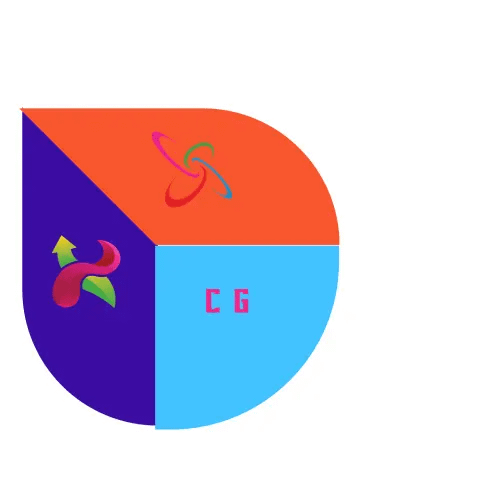
LibGDX Free Download
Key Details
LibGDX is a powerful open-source game development framework that enables developers to create cross-platform games with Java and Kotlin. It provides a comprehensive set of tools and libraries for handling graphics, input, audio, and more. If you’re looking to dive into game development using LibGDX, here’s a step-by-step guide to get you started:
### Setting Up Your Development Environment:
1. **Install Java Development Kit (JDK):**
– LibGDX requires Java to run. Install the latest JDK from the official Oracle or OpenJDK website.
2. **Download and Install an IDE:**
– Choose an Integrated Development Environment (IDE) to write and manage your code. Popular choices include Eclipse, IntelliJ IDEA, or Visual Studio Code.
3. **Create a New LibGDX Project:**
– Use the LibGDX project setup tool, available on the [official website](https://libgdx.com/), to create a new project. Select the desired options, such as project name, package, and game class.
### Understanding LibGDX Basics:
4. **Project Structure:**
– Familiarize yourself with the project structure. LibGDX follows the Model-View-Controller (MVC) pattern and organizes files into core, desktop, android, and other modules.
5. **Understanding the Main Game Loop:**
– LibGDX follows a game loop structure. The `render` method is called continuously, allowing you to update the game state and render graphics.
### Handling Input:
6. **Handling Input Events:**
– LibGDX provides convenient methods for handling user input, such as touch events, keyboard input, and accelerometer data.}
### Managing Assets:
7. **Loading and Managing Assets:**
– LibGDX includes an Asset Manager for efficient loading and managing of game assets like textures, sounds, and fonts.
### Graphics and Rendering:
8. **Rendering Graphics:**
– LibGDX offers a robust graphics API for rendering sprites, textures, and shapes. Use the `SpriteBatch` class for efficient rendering.
### Cross-Platform Development:
9. **Testing on Desktop and Android:**
– LibGDX allows you to test your game on the desktop and Android platforms seamlessly. Run your game on the desktop for quick testing, and deploy to Android when you’re ready.
10. **Handling Different Screen Sizes:**
– LibGDX provides a `Viewport` system to handle different screen sizes and aspect ratios. This ensures your game looks consistent across various devices.
### Additional Tips:
11. **Community and Documentation:**
– Join the LibGDX community forums and explore the extensive documentation available on the official website. The community is active and can provide valuable support.
12. **Version Compatibility:**
– Ensure that your LibGDX version is compatible with the Java version and IDE you are using. Keep an eye on updates to benefit from the latest features and bug fixes.
By following these steps and exploring the rich features of LibGDX, you can create engaging and cross-platform games efficiently. Remember to leverage the community and documentation for assistance and to enhance your game development skills.
How to use
To use LibGDX effectively, you’ll need to understand the fundamental concepts and implement key components. Let’s go through the basic steps:
### 1. **Project Setup:**
– After creating a new LibGDX project using the setup tool, you’ll find a core module where most of your game logic resides. Additional modules, like the desktop and android modules, allow you to run and test your game on different platforms.
### 2. **Game Lifecycle:**
– LibGDX follows a lifecycle pattern for games. Key methods include `create()`, `render()`, `resize()`, and `dispose()`. Use these to initialize resources, handle input, update game logic, and dispose of resources when the game ends.
### 3. **Assets Management:**
– Load and manage your game assets efficiently using the `Asset Manager`. This includes textures, sounds, fonts, and other resources. Loading assets asynchronously is a good practice to prevent freezing during loading screens.
### 4. **Graphics and Rendering:**
– LibGDX uses a `SpriteBatch` for efficient rendering. You draw your game elements between `batch.begin()` and `batch.end()`.
### 5. **Handling Input:**
– Implement the `InputProcessor` interface or use the `InputAdapter` class to handle input events like touch, keyboard, and accelerometer.
### 6. **Scene2D UI:**
– LibGDX includes a powerful UI framework called Scene2D. It’s designed for creating user interfaces with ease. Buttons, labels, tables, and other UI elements can be easily added to your game.
### 7. **Camera and Viewport:**
– Use the `OrthographicCamera` for a 2D game and set up a `Viewport` to handle different screen sizes and resolutions. This ensures your game looks consistent across various devices.
### 8. **Collision Detection:**
– Implement collision detection to handle interactions between game objects. LibGDX provides various collision detection methods, and you can also create your own based on your game’s requirements.
### 9. **Particle Systems:**
– For special effects like explosions or rain, you can use LibGDX’s particle system. It enables you to create and control particle effects easily.
### 10. **Testing and Deployment:**
– Regularly test your game on the desktop for quick iterations. When ready, deploy and test on Android devices or emulators. LibGDX facilitates cross-platform development.
### 11. **Documentation and Community:**
– Refer to the official LibGDX documentation for in-depth information on classes and methods. The LibGDX community forums are excellent for troubleshooting and seeking advice.
### 12. **Version Control:**
– Consider using version control systems like Git to track changes in your codebase. This helps in collaboration and managing different versions of your game.
By following these steps and delving into more advanced features as needed, you’ll be able to harness the full potential of LibGDX for your game development endeavors. Don’t hesitate to explore the community and experiment with different features to create the gaming experience you envision.
